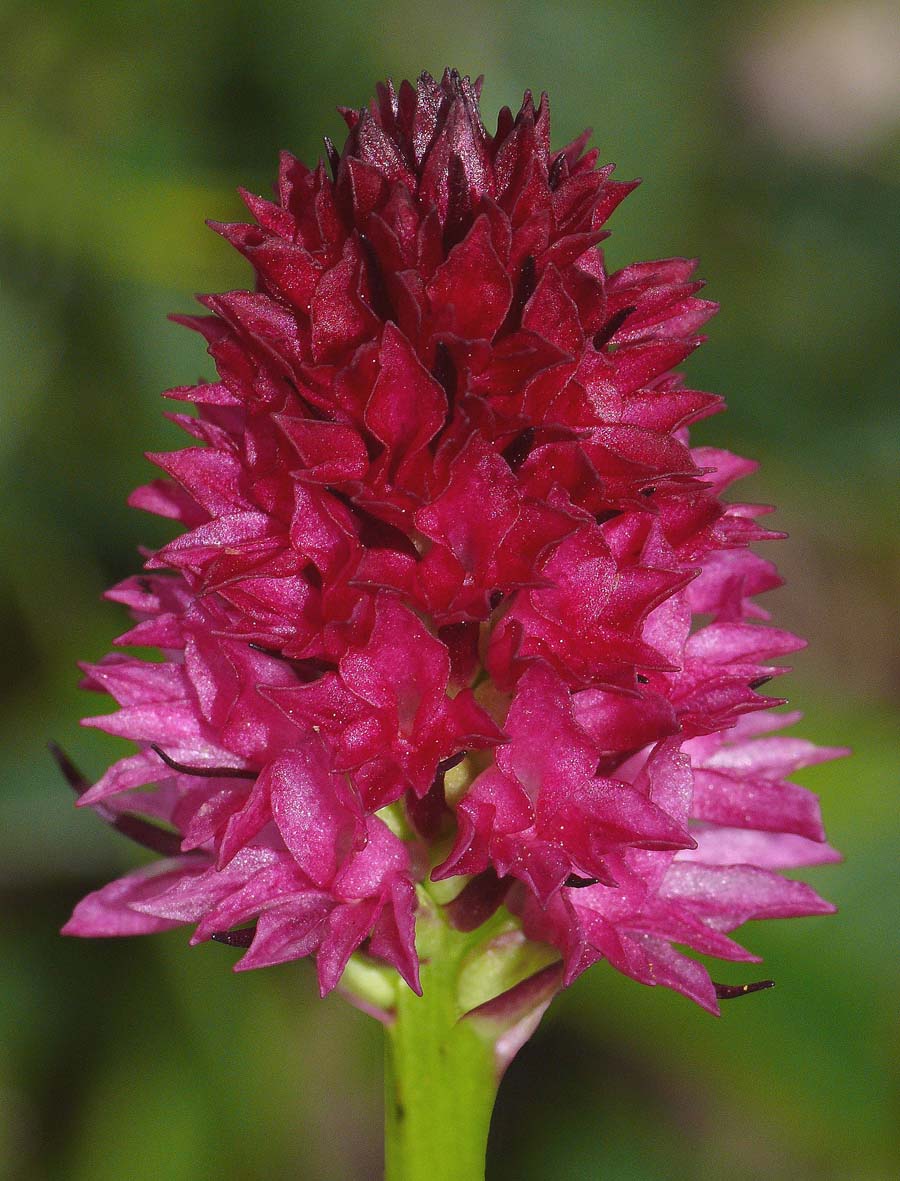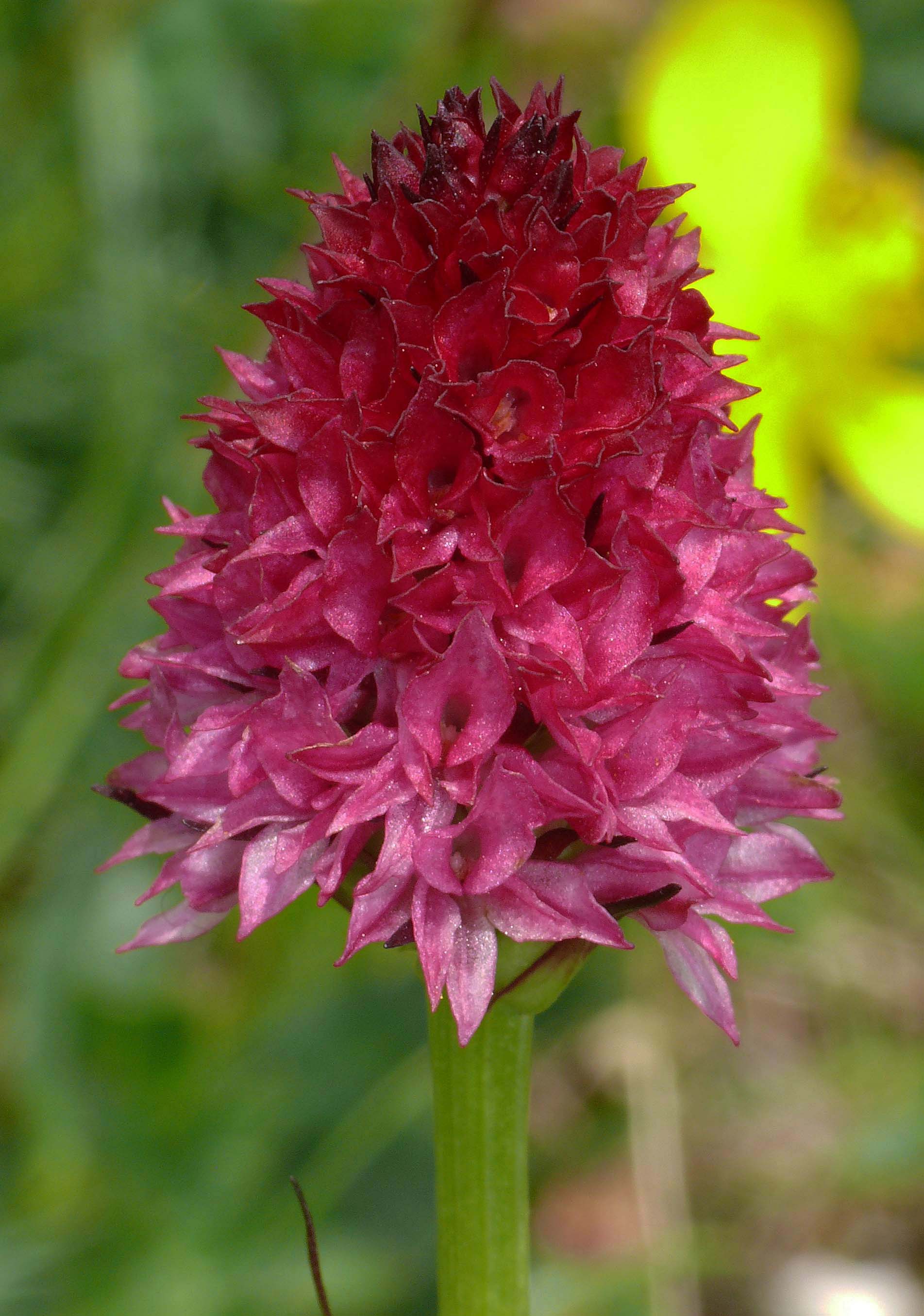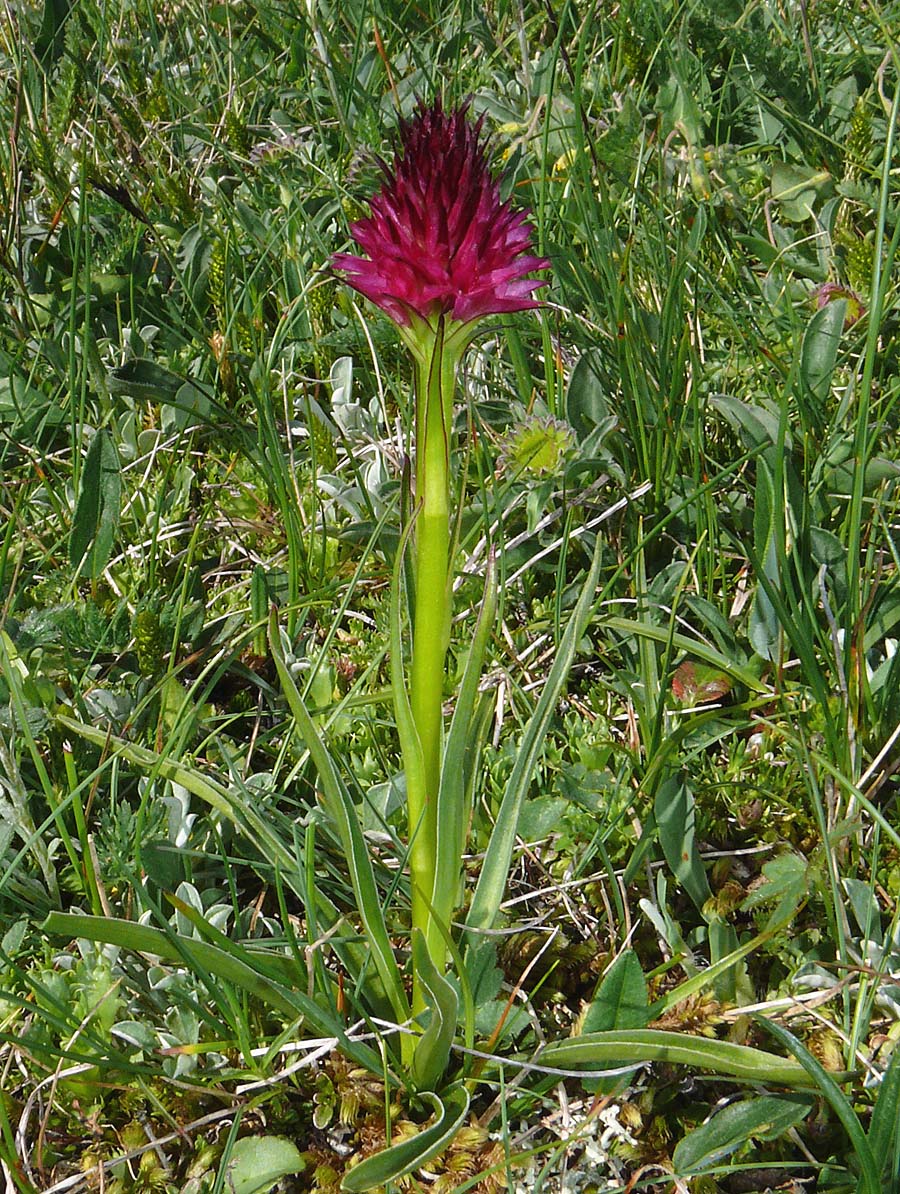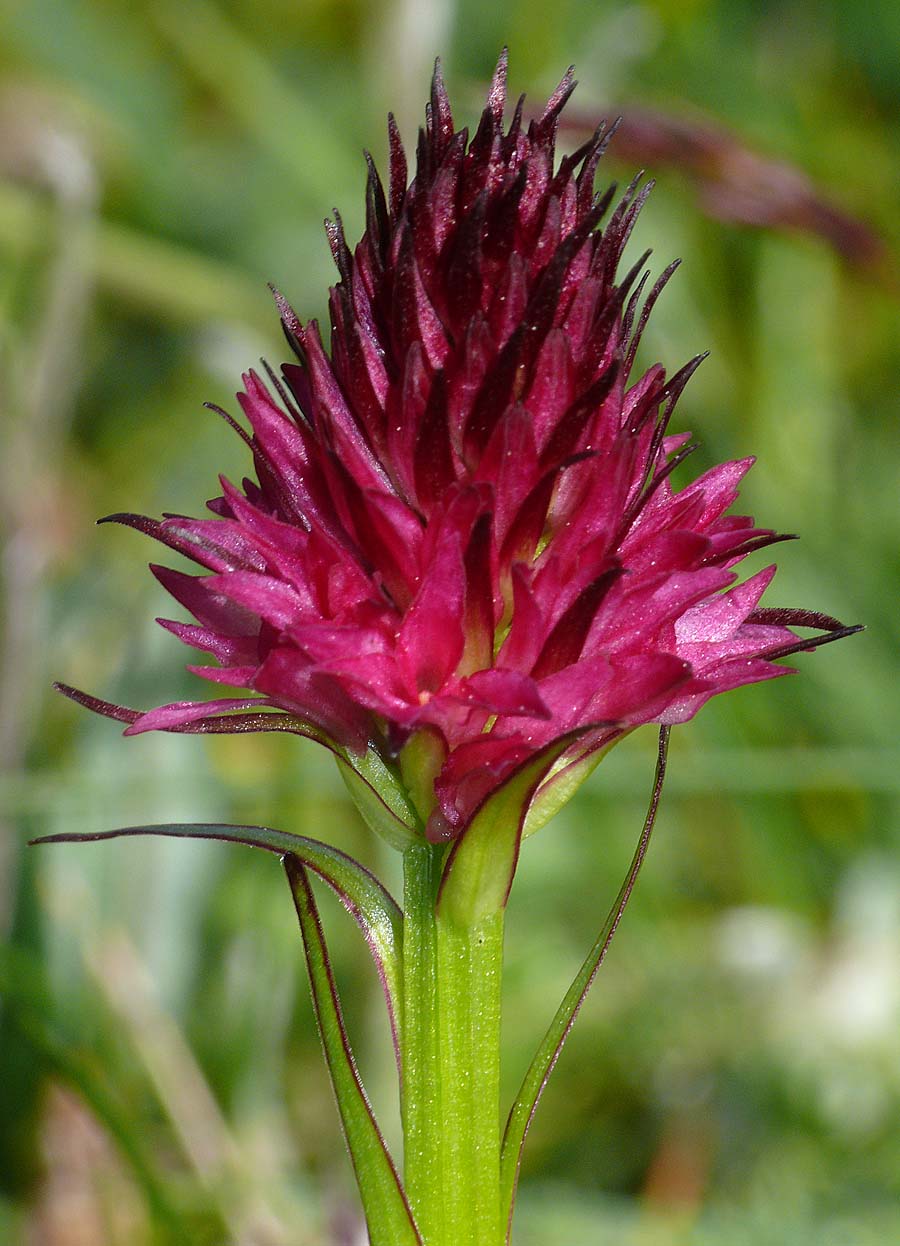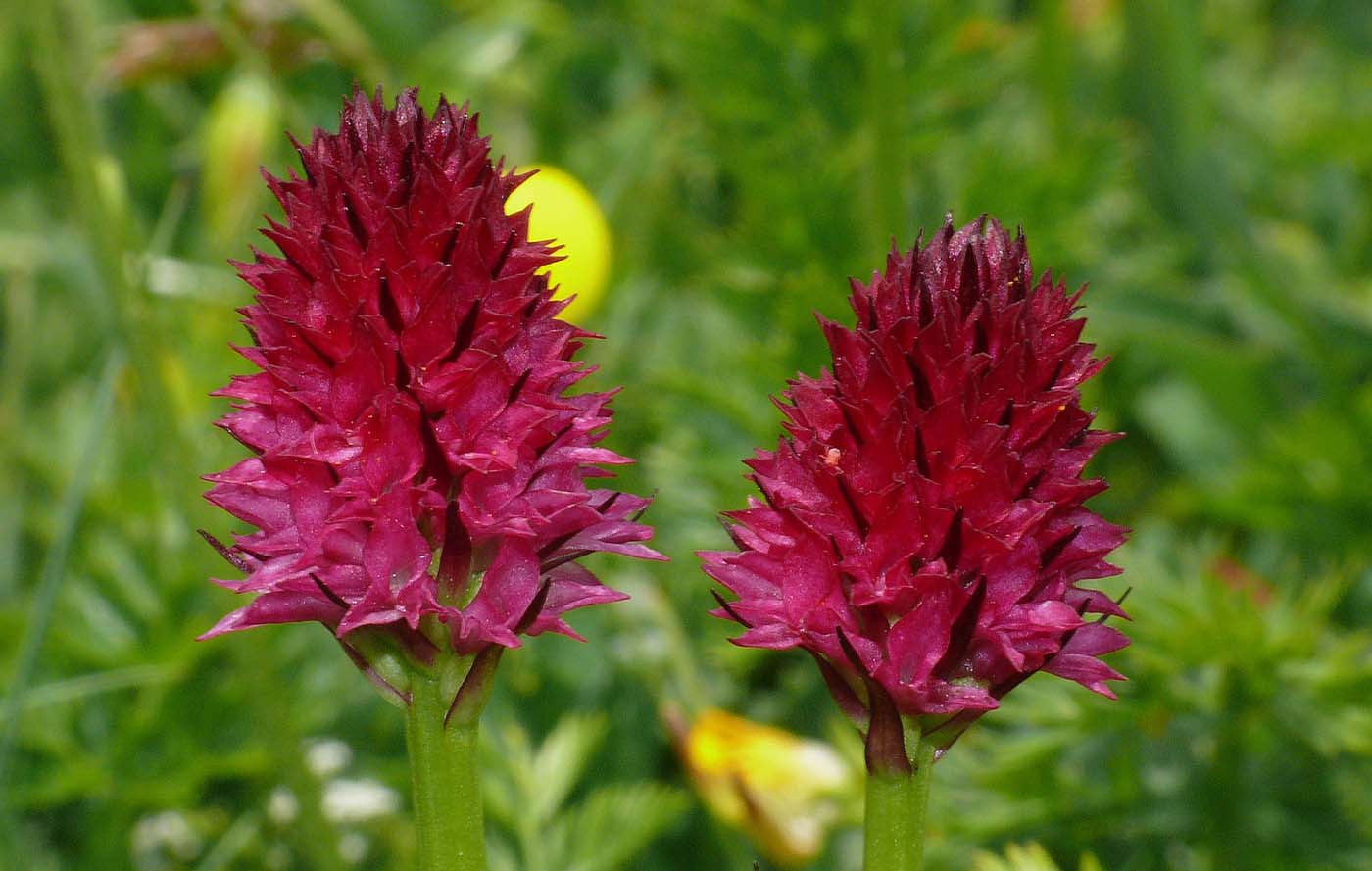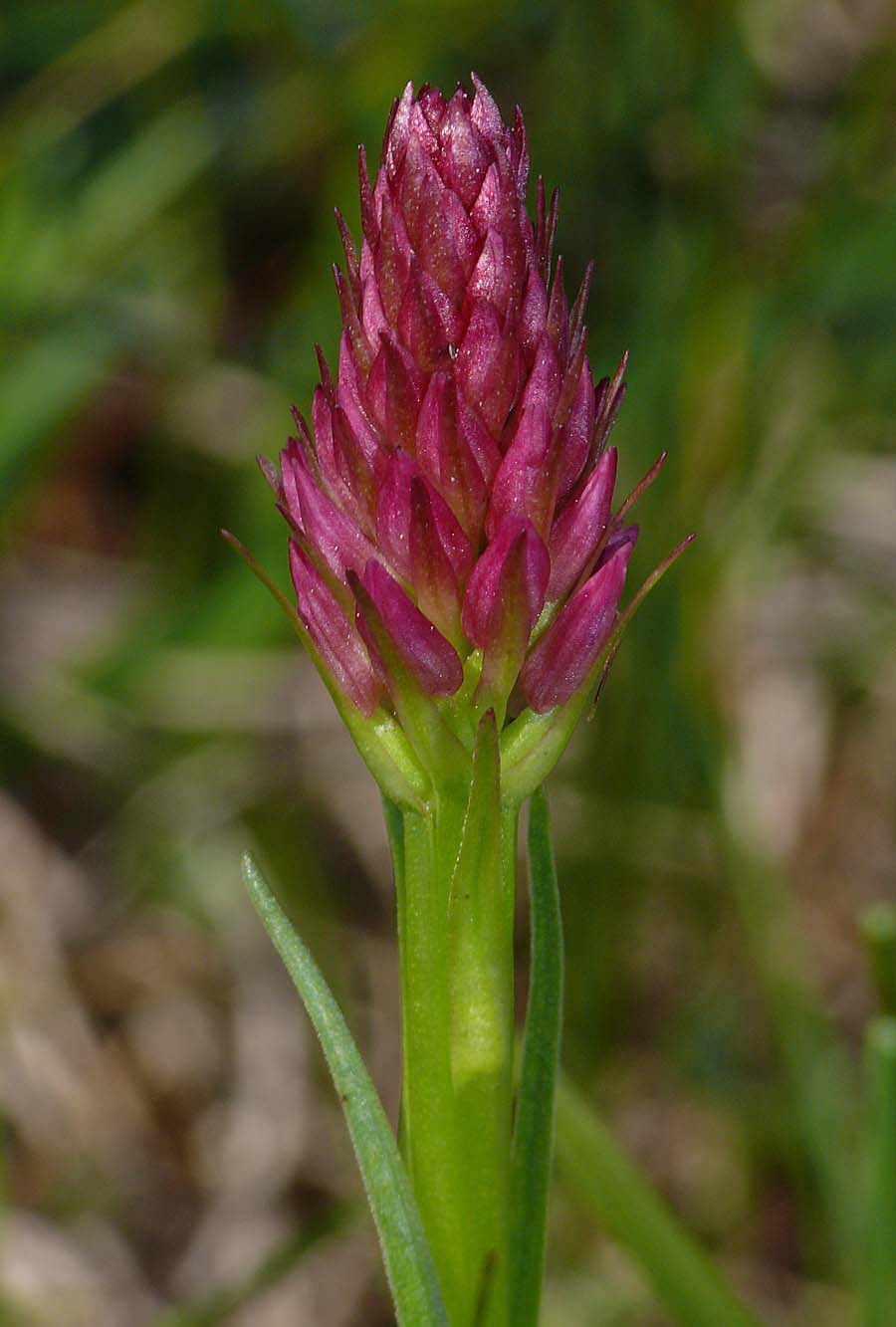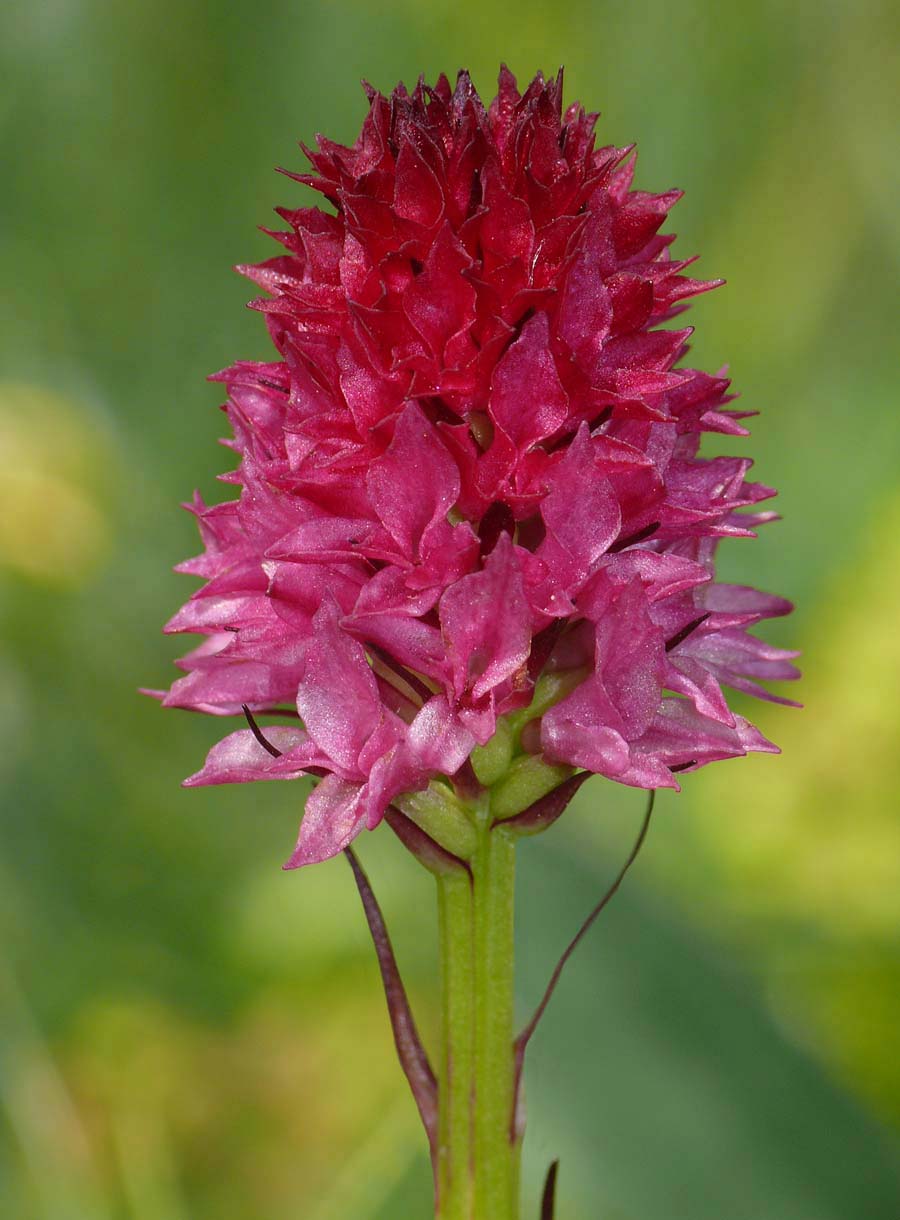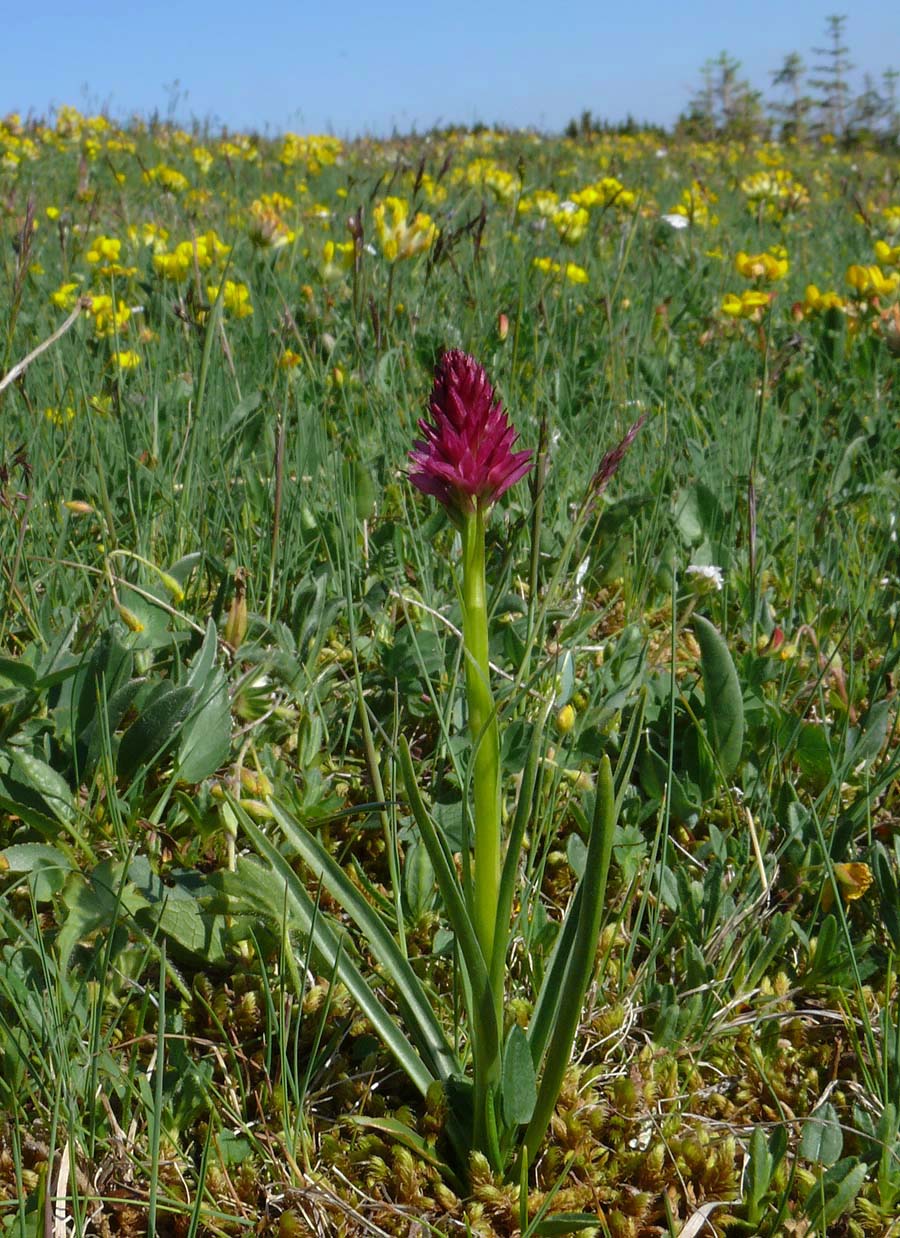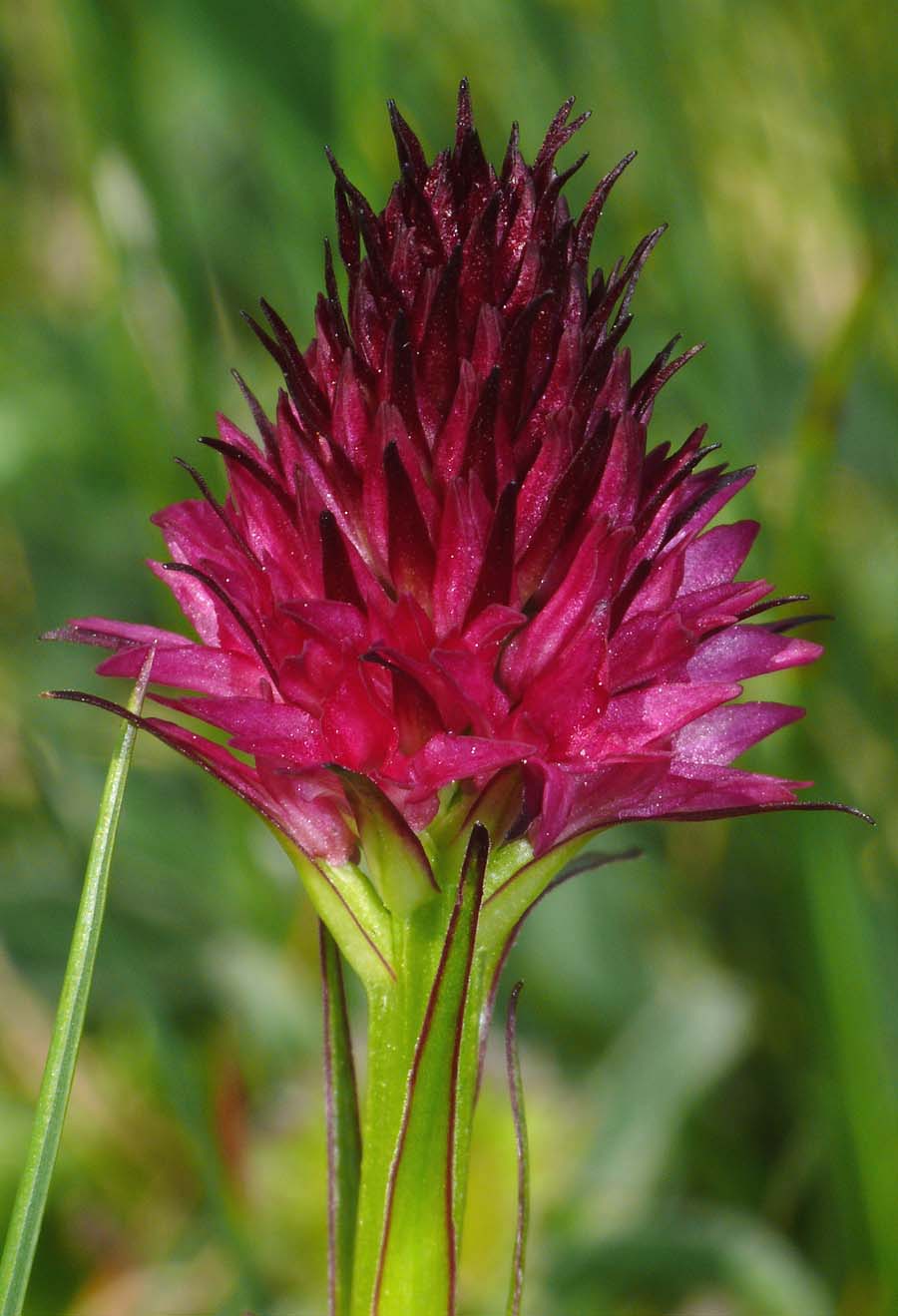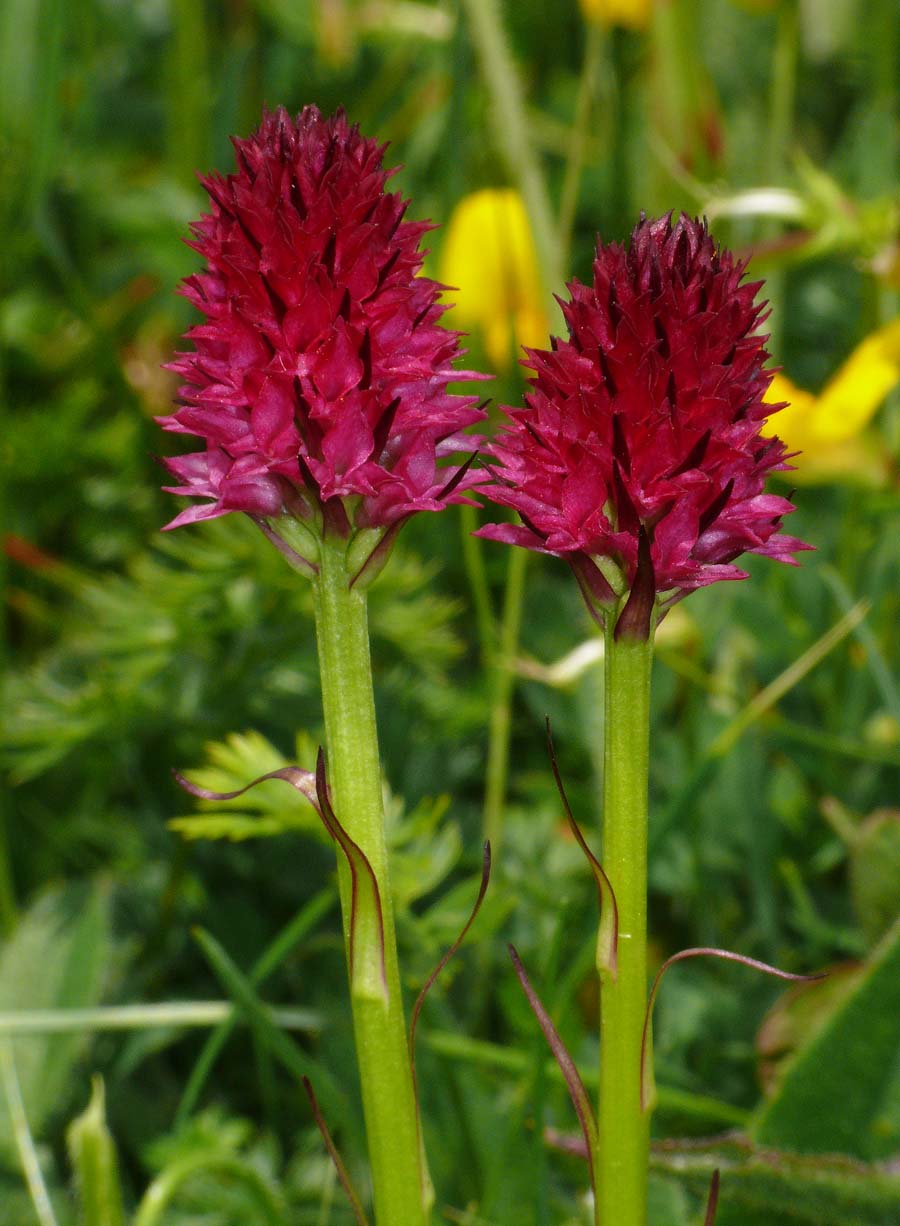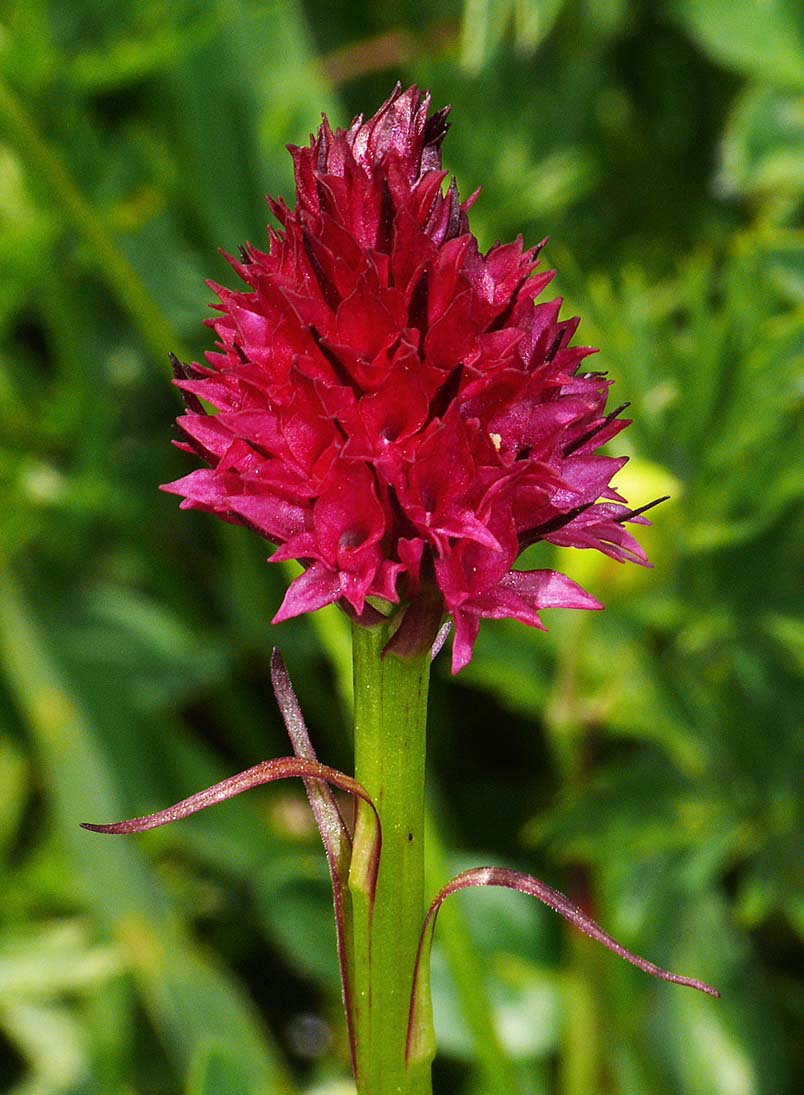This species was originally introduced to the botanical world as Orchis miniata in 1769 when Crantz first described it from Austria. Over a century later in 1889, Wettstein re-described the species as Gymnadenia rubra, a name by which the species is still most commonly known.
Until the turn of the century, G. rubra was a name applied to a clade of taxons that encompassed many of the "Red Vanilla Orchids" but which was subsequently subdivided into what are now known as G. bicolor, G. minor, G. dolomitensis, G. hygrophila and G. miniata. Perhaps the most significant of these changes was the questionable initiation of G. bicolor, as it separated out the most numerous constituent of the clade, namely the plants whose flowers exhibited strongly shaded colouration, with dark red at the top of the inflorescence and pink at the bottom.
G. miniata is now considered to be rare, perhaps extremely rare in the western and central Alps and at its most frequent in the easterly massifs of Austria and the Carpathians. Although variable, it typically has an inflorescence taller than it is wide, with individual flowers that are a little smaller and less open than its relatives. An important differentiator between G. miniata and both G. dolomitensis and G. bicolor is that its sepals and petals are roughly of equal width, whereas the petals of the latter are significantly narrower. Colouration in immature plants is a uniform crimson, but this uniformity is quickly lost and aging soon induces a lightening of the lower flowers, thus producing an inflorescence that grades upwards from pink to deep red. This effect is very reminiscent of G. bicolor and there are many authorities, including the authors who consider the latter species to be simple variants of both G. miniata and G. dolomitensis. The recent taxonomic changes in this group of orchids definitely leave some questions unanswered.
Until the turn of the century, G. rubra was a name applied to a clade of taxons that encompassed many of the "Red Vanilla Orchids" but which was subsequently subdivided into what are now known as G. bicolor, G. minor, G. dolomitensis, G. hygrophila and G. miniata. Perhaps the most significant of these changes was the questionable initiation of G. bicolor, as it separated out the most numerous constituent of the clade, namely the plants whose flowers exhibited strongly shaded colouration, with dark red at the top of the inflorescence and pink at the bottom.
G. miniata is now considered to be rare, perhaps extremely rare in the western and central Alps and at its most frequent in the easterly massifs of Austria and the Carpathians. Although variable, it typically has an inflorescence taller than it is wide, with individual flowers that are a little smaller and less open than its relatives. An important differentiator between G. miniata and both G. dolomitensis and G. bicolor is that its sepals and petals are roughly of equal width, whereas the petals of the latter are significantly narrower. Colouration in immature plants is a uniform crimson, but this uniformity is quickly lost and aging soon induces a lightening of the lower flowers, thus producing an inflorescence that grades upwards from pink to deep red. This effect is very reminiscent of G. bicolor and there are many authorities, including the authors who consider the latter species to be simple variants of both G. miniata and G. dolomitensis. The recent taxonomic changes in this group of orchids definitely leave some questions unanswered.
